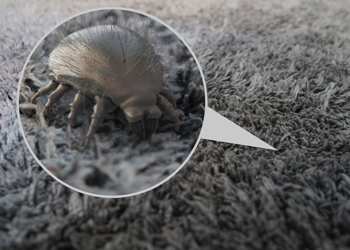Creating a better environment
Improving our indoor domestic environment is vital when attempting to reduce the causes of asthma and allergies in our homes.
How to control dust mites
Humid conditions are perfect for dust mites, as their only source of water is from the air. By reducing household humidity to between 45-60%, dust mites will be less able to breed, helping asthma and allergy sufferers to breathe more easily. The ideal temperature for dust mites ranges from 65 F-80 F, a common range for indoor room temperatures. However, it is important to be aware that monitoring the temperature and humidity won’t always get rid of dust mites overnight. As the humidity falls, dust mites will retreat from the surface and even in very dry conditions, it can take quite a few months to eliminate a large dust-mite population.

Improving indoor air quality
Efficient ventilation is critical to achieving good indoor air quality. Removing stagnant air and refreshing interior air can easily be done by opening a window however in our crowded, noisy and polluted towns and cities this isn’t always possible. Installing a positive input ventilation (PIV) system is a simple solution. Modern fans will filter and control air as it passes through the home, removing air pollutants and helping to reduce humidity.
Cut your risk of asthma from pets and animals
If you find that your household pets aggravate your asthma keeping them out of your bedroom or living room will help. Getting a more efficient vacuum cleaner, installing a ventilation system and regular grooming and bathing of pets will also help to keep the amounts of dander present in the home to a minimum.
Taking an antihistamine or using a nasal spray before visiting someone who owns a pet is also a good idea, as is wearing a mask or scarf to cover your nose and mouth.
Aspergillus
A common type of fungus or mould, Aspergillus can be found in decomposing organic material and damp, poorly ventilated homes. Small particles of aspergillus suspended in the air can be breathed in and settle on your lungs. For most people this isn’t an issue as the body’s immune system destroys the spores. However, if they’re inhaled by someone with a weak immune system or lung condition such as asthma or cystic fibrosis it can lead to complications including chest infections.
The best way to avoid aspergillus is to keep your home well-aired and ventilated and to keep mould and condensation to a minimum.
